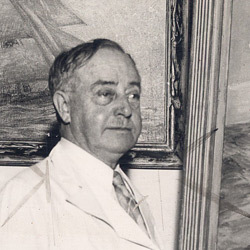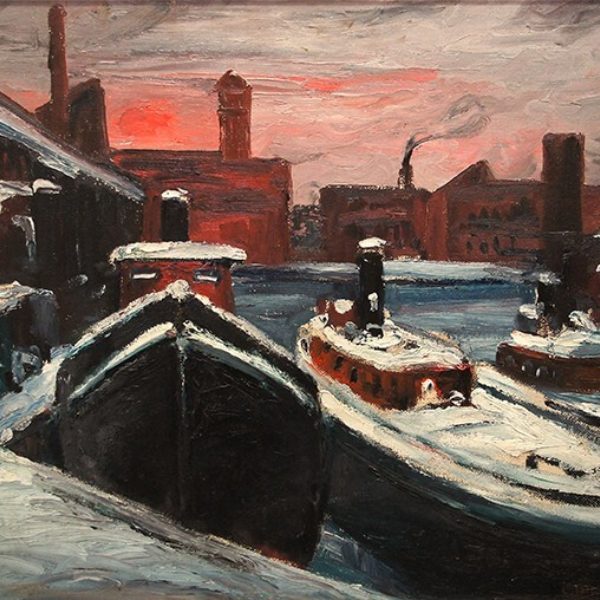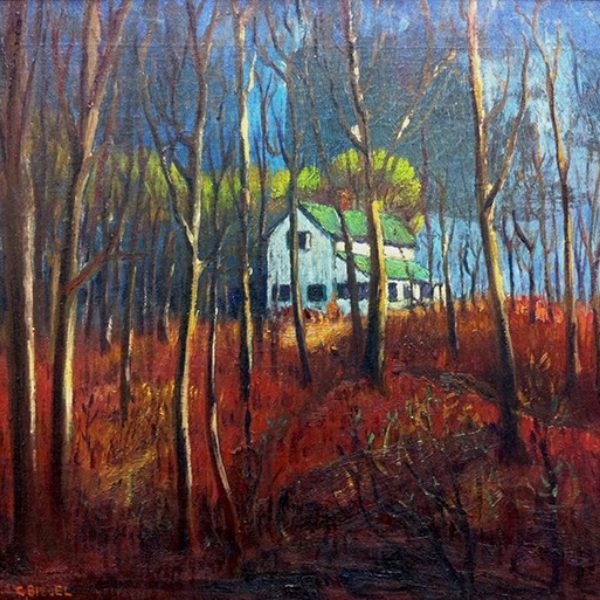
Charles Biesel
b. 1865, New York, NY - d. 1945, Chicago, IL
Charles Biesel was born in New York City in 1865. His father was German (of Dutch ancestry) and worked as a carriage maker and saddler. When Biesel was 11, the family moved to Newport, Rhode Island, where his father made riding saddles and polo equipment for naval officers. Biesel’s mother also had an artisanal background: her father made stained glass windows in Germany, and she did gold embroidery. Charles learned his father’s trade but left Newport to live in South Carolina with his mother’s family and learn farming. He eventually chose instead to become an artist. Biesel moved to New York, apprenticing with the American Lithograph Company and spending nine years there. He married and had a son, Fred Biesel (who also became an artist), in Philadelphia in 1893, where the lithograph company had a plant. Proficient in drawing and watercolor, Biesel abandoned commercial lithography and became an easel artist. He moved back to Newport, opened a studio, and helped in his father’s saddle-making business. The patrons for polo saddles bought his marine scenes, made during his early years painting along the New England coast. Proficient in both oil and water media, Biesel claimed that his realist style had been greatly influenced by Winslow Homer and John Sloan. He co-founded the Newport Art Association in 1912.
After twenty years in Newport, Biesel moved to Chicago in 1918, as first lieutenant in the ordinance reserve corps on duty at Rock Island arsenal. Later headquartered in Chicago, he conducted munitions inspections of Indiana steel mills. Biesel found time to paint while in the service—as well as to exhibit. His first Chicago show of ship and sea marines was mounted at the Donlon Galleries in the Fine Arts Building on Michigan Avenue. Homer’s influence is evident in Biesel’s many marine scenes such as Fish House—Door County, for example, which captures the fleeting effects of light and water, sun and surf. Tug Boats, made in the 1920s, brings the marine theme of large boats to the city—likely the riverfront—with factories in the distance spewing grey smoke into an auburn sky.
Biesel lived at the 57th Street Artists Colony and soon became a member of the Arts Club of Chicago and the Chicago Society of Artists. In 1922, he helped found the Chicago No-Jury Society of Artists and served as the Society's first secretary. His early experience as a member of the Society of Independent Artists in New York served him well as he sought to help the No-Jury Society gain recognition for the vanguard artists of Chicago. Biesel held numerous solo exhibitions in galleries throughout the Midwest and the East. His work was included in some of the first exhibitions sponsored by the Hyde Park Art Center (founded in 1939). Additionally, Biesel was a frequent exhibitor in the annual exhibitions of Chicago painters held at the Art Institute of Chicago. He died in Chicago in 1945.
Lisa Meyerowitz
References
Biesel, Charles. Pamphlet file P-02665. Ryerson Library. Art Institute of Chicago. [10 items]
Bulliet, C. J. “Artists of Chicago, Past and Present: No. 20: Charles Biesel.” Chicago Daily News, July 6, 1935.
Hall, Michael D., and Pat Glascock. Great Lakes Muse: American Scene Painting in the Upper Midwest, 1910–1960. Flint, MI: Flint Institute of Arts, 2003.
Jacobsen, J. Z. The Art of Today: Chicago, 1933. Chicago: L. M. Stein, 1932.
Artist image: Photograph of Charles Biesel, October 1940, collection of Bernard Friedman.

